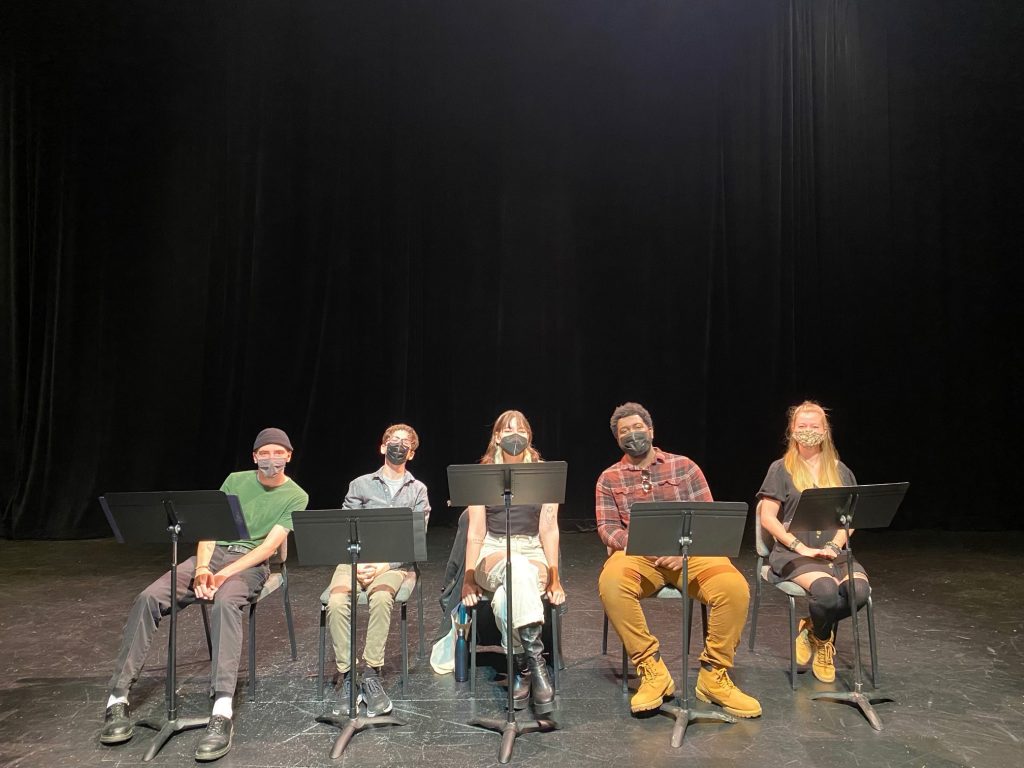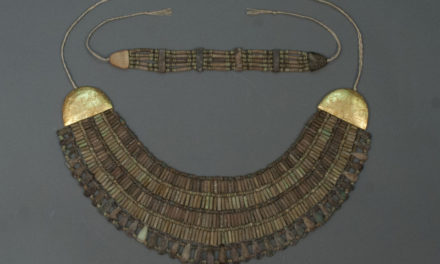In room 205 of the Schwartz Center, five actors illuminated in the golden glow of a few stage lights sat in a row and waited patiently to begin the Feb. 26 live reading of “Lizzie,” a thesis play by Anneka Rose (22C).
“Lizzie” is an original work inspired by an art history class Rose took in the fall 0f 2021. Rose was drawn to the pre-Raphaelite paintings and became enthralled by the subject of their works: Elizabeth “Lizzie” Siddal, a beautiful model and artist.
“We started going over the pre-Raphaelites and I became mesmerized by their work,” Rose said. “I wanted to learn more about this woman that was in their work and that’s basically where it all started. I started researching more about Lizzie Siddal, and I just thought, ‘There’s a play there.’”

Anneka Rose (22C) wrote an original play titled, “Lizzie,” inspired by her art history class and pre-raphaelite subject, Elizabeth “Lizzie” Siddal. Courtesy of Anneka Rose
The play follows “Lizzie,” read by Sophia LiBrandi (22C), whose aspirations lay at the mercy of her male counterparts, a group of men self-titled “the pre-Raphaelites.”
Rose’s depiction of Lizzie is one of a woman who strains against the painted lines of society; she is thoughtful, articulate and a bright soul, endlessly dampened by the men in her life.
“‘Lizzie’ felt like a play about the female condition, exploring what it is like to be defined in a man’s world,” LiBrandi said.
In an hour and a half, the audience was whisked through a large swath of Siddal’s life. The crowd watched Siddal emerge as the pre-Raphaelite Brotherhoods’ muse, fall in love, experience sickness of both body and mind and become an artist in her own right.
“Lizzie” is heart-wrenching and woven with threads of history, irony and a mindful consideration of what it means to be a woman. She is isolated on stage, while the other readers play the founding fathers of the Pre-Raphaelite Brotherhood movement, a series of men that have various intentions and thoughts about her, all of them oppressive in some way or another.
The persistence and discipline that shines within Lizzie Siddal is also clear to see in Rose, who began the fall of 2021 with an entirely different play in front of her.
“I was having issues with my adviser and I didn’t agree with the way he was handling situations, which made me hate the piece I was working on,” Rose said. “So, I put that aside and decided to work on something new.”
In mid-October, she began anew with a different advisor and a fresh idea. Rose set a deadline of 20 pages every two weeks and Visiting Fellow Kimberly Belflower worked with her to produce a full first draft by the end of fall semester.
“I left a lot of our meetings with my original adviser feeling like a failure, really doubting myself, feeling like I shouldn’t be in the honors program, shouldn’t be writing a thesis, I shouldn’t even be a playwright,” Rose said. “My new adviser Kimberley Belflower was amazing and never once let those thoughts get in my way.
Despite having a fully-formed draft, Rose was frustrated by the lack of connecting threads in the piece and found answers while watching “Portrait of a Lady on Fire,” a 2019 French film by Céline Sciamma. She has since done several rewrites and edits and plans to do more before she freezes the script for her thesis defense.
During the live reading, Rose realized that a lot of scenes reach their climax earlier than expected and that the piece needs another female character to act as a supportive guide for Lizzie, but she plans to wait until after her thesis defense to add a new character.

The actors for the live reading of “Lizzie.” Courtesy of Anneka Rose
Alfred Tenneyson’s “The Lady of Shalott” holds a prominent voice in Rose’s current reading of the play. The poem, which depicts the tragedy of a young woman trapped in a tower who is cursed to weave images of the outside world based only on what she sees through a mirror’s reflections, contains the line “she left the loom …/ She saw the water lily bloom.” Rose thinks that this line will be the title of the play when she defends it but said that naming a play is her least favorite task; it changes with every reading based on what she thinks the current draft’s main takeaway is.
LiBrandi’s reading was full of compelling tension, and it was clear to see she was living Lizzie as she read. “Anneka did a beautiful job writing a truly complex female character, one that contains nuances that male writers tend to miss,” LiBrandi said.
Despite many hurdles, Rose produced a beautiful verbal portrait of Lizzie Siddal that lives long after the lights dim. In the final moments of the piece, a young girl in a modern-day museum sits on the floor and begins to scribble in her coloring book. The conclusion fits into a macro view of the play as a whole; here begins the post-education creative life of playwright Anneka Rose, rooted in mentorship and the women who came before her.
Alison Barlow (she/hers 24C) is an illustrator for the Wheel. A political science and creative writing major, she is from the northernmost part of Vermont (yes, there is a lot of snow). In her free time, Barlow plays soccer, tutors for SHINE and is a part of Residence Life. She is also an avid reader and gym rat.






